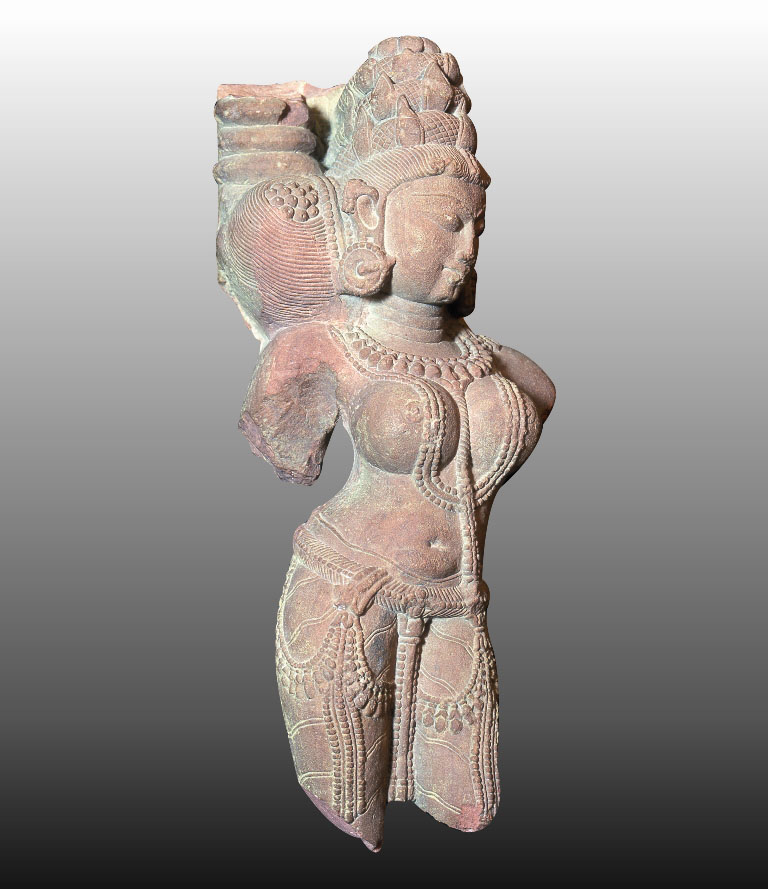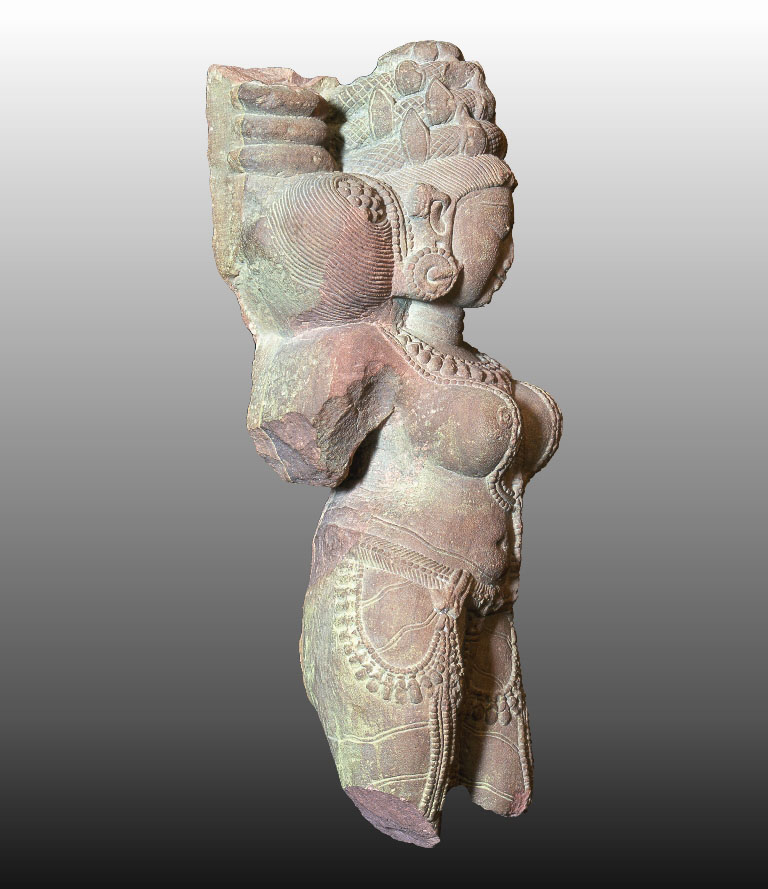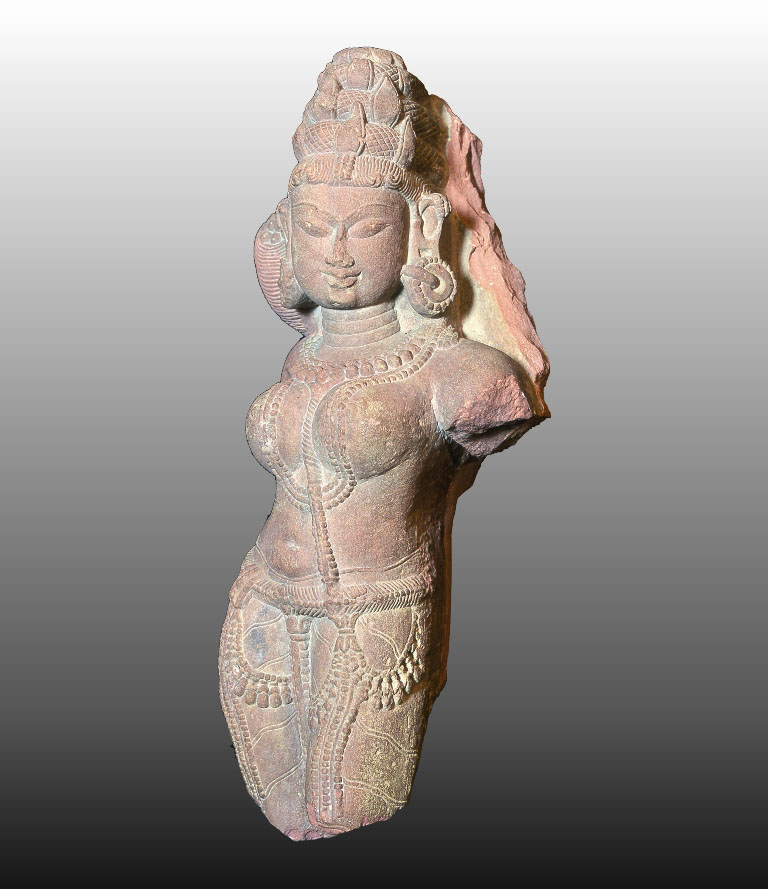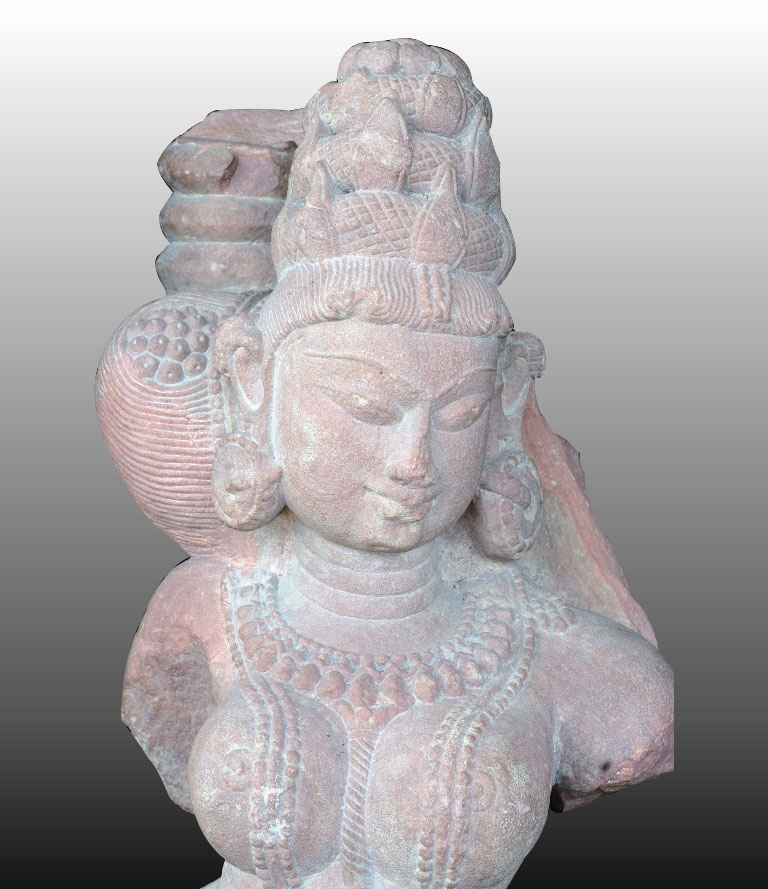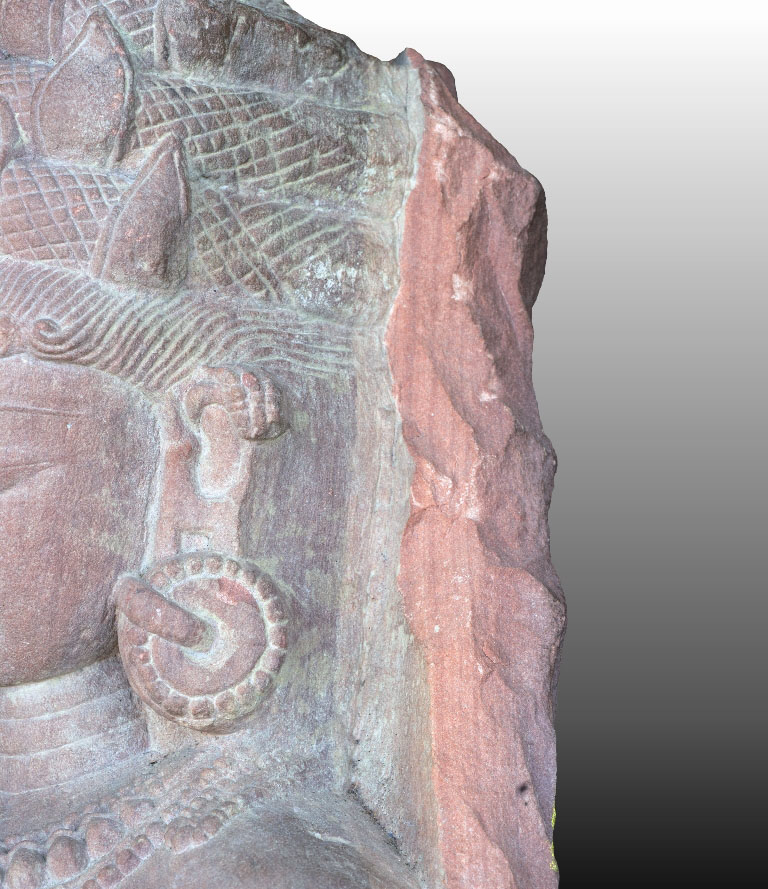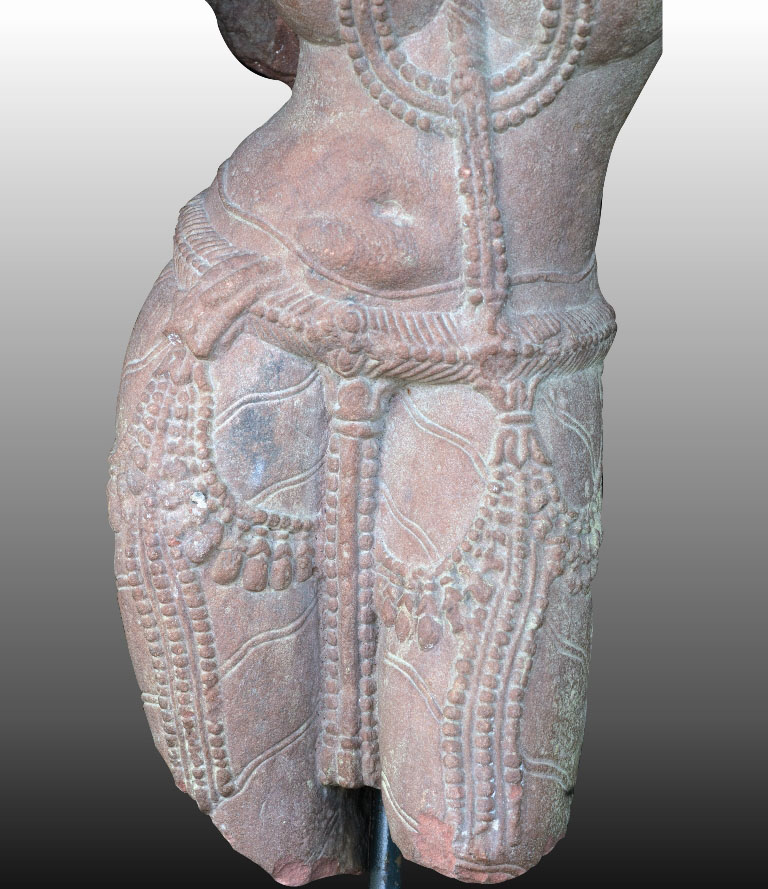ApsarasNorth India - Sandstone - Height 53 cm - 10th-12th century
Indian civilisation, whose religious thought always aimed at detachment, notably from passions, nevertheless attributed a unique value to the body and senses. This concern is one of the great paradoxes of the Indian tradition. As early as Vedic times, the body took a central role in the philosophical speculations, since it was conceived of as a microcosm in perfect analogy with the macrocosm, both natural and divine.1 Thus there is identity, for instance, between the beauty and sinuousness of the female body and some wonders of nature, like trees, rivers, mountains, which started to be represented in the form of anthropomorphic images. The sensuousness permeating sculptures like this one makes them especially interesting and compelling; they incarnate the Indian ideal of female beauty. In fact these figures, possibly celestial nymphs, are depicted with sensual and graceful movements, elongated eyes, full lips, shapely breasts, slim waists, slightly prominent bellies, full thighs, well-shaped, seemingly boneless arms with soft and curvaceous masses. These characteristics are enhanced and embellished by necklaces and garlands harmoniously following the volumes of the bodies, clinging and diaphanous robes, earrings showing the grace of small ears, elaborate hair-styles leaving the foreheads bare. However, the ideal of worldly beauty shown here represents by analogy a purely spiritual one. This female figure is caught in a posture of the hips and waist called tribhanga, derived from the typical movements of Indian dance, which was always a source of artistic inspiration. The young woman’s face is turned to the left, accompanied by a voluptuous gaze and by a hint of a winking smile. On the figure’s right shoulder a decorated jar can be seen, showing how pottery like this was manufactured at the time. The bust and the face extend to the stylization and the rigidity of the adorned ones they allow to shine through the characteristic elements of the epoch post midle ages.
|

